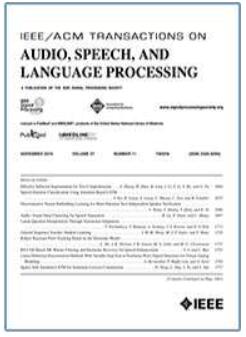Heterogeneous-Graph Reasoning With Context Paraphrase for Commonsense Question Answering
IF 5.1
2区 计算机科学
Q1 ACOUSTICS
IEEE/ACM Transactions on Audio, Speech, and Language Processing
Pub Date : 2024-07-26
DOI:10.1109/TASLP.2024.3434469
引用次数: 0
Abstract
Commonsense question answering (CQA) generally means that the machine uses its mastered commonsense to answer questions without relevant background material, which is a challenging task in natural language processing. Existing methods focus on retrieving relevant subgraphs from knowledge graphs based on key entities and designing complex graph neural networks to perform reasoning over the subgraphs. However, they have the following problems: i) the nested entities in key entities lead to the introduction of irrelevant knowledge; ii) the QA context is not well integrated with the subgraphs; and iii) insufficient context knowledge hinders subgraph nodes understanding. In this paper, we present a heterogeneous-graph reasoning with context paraphrase method (HCP), which introduces the paraphrase knowledge from the dictionary into key entity recognition and subgraphs construction, and effectively fuses QA context and subgraphs during the encoding phase of the pre-trained language model (PTLM). Specifically, HCP filters the nested entities through the dictionary's vocabulary and constructs the Heterogeneous Path-Paraphrase (HPP) graph by connecting the paraphrase descriptionsThe paraphrase descriptions are English explanations of words or phrases in WordNet and Wiktionary.
利用上下文转述进行异构图推理以实现常识性问题解答
常识性问题解答(CQA)一般是指机器在没有相关背景材料的情况下利用其掌握的常识来回答问题,这是自然语言处理中一项具有挑战性的任务。现有的方法主要是根据关键实体从知识图谱中检索相关子图谱,并设计复杂的图神经网络对子图谱进行推理。然而,这些方法存在以下问题:i) 关键实体中的嵌套实体导致引入无关知识;ii) 质量保证上下文没有与子图很好地整合;iii) 上下文知识不足阻碍了对子图节点的理解。本文提出了一种带上下文转述的异构图推理方法(HCP),它将词典中的转述知识引入关键实体识别和子图构建中,并在预训练语言模型(PTLM)的编码阶段有效地融合了质量保证上下文和子图。具体来说,HCP 通过词典词汇过滤嵌套实体,并通过连接意译描述11 构建异构路径-意译(HPP)图,意译描述是 WordNet 和 Wiktionary 中单词或短语的英文解释。然后,通过在 PTLM 编码阶段构建可见矩阵,我们将 QA 上下文表示融合到 HPP 图中。最后,为了得到答案,我们通过 Mask Self-Attention 对 HPP 图进行推理。在 CommonsenseQA 和 OpenBookQA 上的实验结果表明,在编码阶段将 QA 上下文与 HPP 图融合,并通过上下文解析增强 HPP 图的表示,可以提高机器的常识推理能力。
本文章由计算机程序翻译,如有差异,请以英文原文为准。
求助全文
约1分钟内获得全文
求助全文
来源期刊

IEEE/ACM Transactions on Audio, Speech, and Language Processing
ACOUSTICS-ENGINEERING, ELECTRICAL & ELECTRONIC
CiteScore
11.30
自引率
11.10%
发文量
217
期刊介绍:
The IEEE/ACM Transactions on Audio, Speech, and Language Processing covers audio, speech and language processing and the sciences that support them. In audio processing: transducers, room acoustics, active sound control, human audition, analysis/synthesis/coding of music, and consumer audio. In speech processing: areas such as speech analysis, synthesis, coding, speech and speaker recognition, speech production and perception, and speech enhancement. In language processing: speech and text analysis, understanding, generation, dialog management, translation, summarization, question answering and document indexing and retrieval, as well as general language modeling.
 求助内容:
求助内容: 应助结果提醒方式:
应助结果提醒方式:


